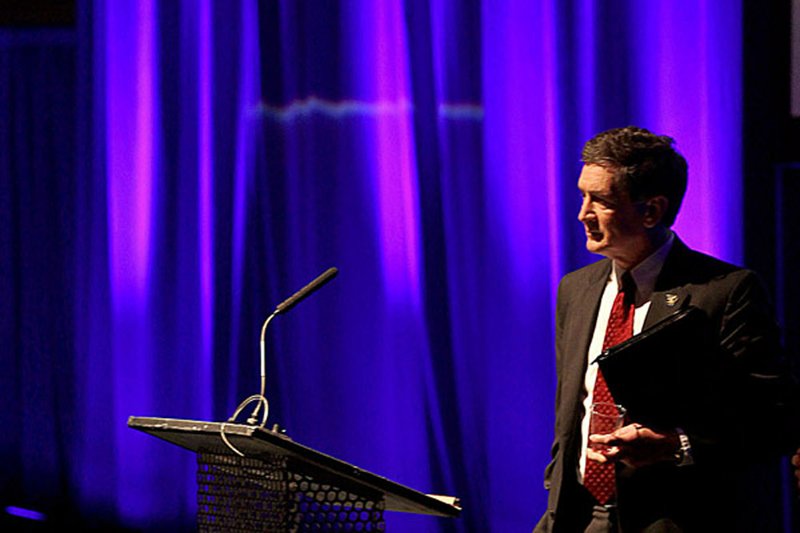LITTLE ROCK — Though the Arkansas tourism industry has felt the effects of the economic downturn, officials say they are staying the course in the spring and summer marketing campaign.
Travel to the state fell 6 percent in 2009, according to a survey done by Longwoods International.
Collections from the statewide 2 percent tourism tax, levied on hotels, fell about 4.6 percent in fiscal 2010 from the previous year but started to rise in the first months of fiscal 2011, which started July 1, said Joe David Rice, tourism director for the Arkansas Department of Parks and Tourism.
The recession “caught up with us last year, ... but I think it has bottomed out,” Rice told the State Parks, Recreation and Travel Commission on Thursday at the Statehouse Convention Center in Little Rock.
Areas such as Hot Springs and some lakes and river resorts saw more visitors this summer, Rice said. He estimated tourism tax collection has increased 3 percent to 4 percent in the first months of the fiscal year, including a 12 percent annual increase in collections in July.
Rice said there are indications that the explosion of the Deepwater Horizon oil well in the Gulf of Mexico discouraged some travel to the coastal states and benefited Arkansas tourism. But the state did not change its marketing policy to take advantage of the situation, Rice said.
“The last thing we’d want to do is capitalize on misfortune,” he said.
Vickie Egleston, who runs a resort on DeGray Lake with her husband, said she is sympathetic to family-run businesses on the coast but that the disaster brought people to Arkansas who might not have otherwise come.
“They had a totally different type of vacation,” she said, recalling guests who visited in June for the first time and came back in August for a second trip.
For f iscal 2011, about $950,000 was cut from the department’s advertising budget. Most of the cuts were in the budget for Cranford Johnson Robinson Woods, the advertising agency that developed the marketing campaign.
Reductions cut into the agency’s marketing fall campaign - fewer television ads, for example - to keep spending closer to levels for the spring and summer push.
At $5.84 million, spending on the spring and summer campaign for fiscal 2011 will be about $500,000 less than what it might normally be, Rice said. Though the department will continue to advertise in Arkansas and in several surrounding states, the “intensity” of the campaign will be dialed down, with fewer television ads and some cutbacks in out-of-state print media.
Again this year, ads are pushing activities in the state and are stressing affordability and convenience. Some of the ads developed for print magazines and tablet readers, such as the iPad, will feature activities like spas, shopping and cycling. Others will focus on attractions in particular cities and regions, including Eureka Springs, Fort Smith and the Delta.
Campaign developers also plan to continue strengthening the online component of the strategy.
Arkansas has the fourth most visited tourism website in the country, after Michigan, Colorado and Virginia. The advertising plan includes using social-media sites to target particular demographics, like golfers, and partnering with websites such as gowalla.com that allow users to track their locations, and share trip photos and recommendations with followers.
New tools - such as a bar-codelike image included in magazine ads that can be scanned by “smart” phones to show videos - help link print and online content.
“We’re putting the old and new together. Convergence is the 25-cent word today,” said Cranford Johnson Robinson Woods President Wayne Woods as he introduced the campaign.
Rice said Arkansas is the first state to use technology like the bar-codelike reader. Though it’s not clear yet how much of the targeted demographics use tools like this right now, he said, the industry is heading in that direction.
“When it becomes more commonplace, we’ll be ready,” he said.
Business, Pages 27 on 09/24/2010
